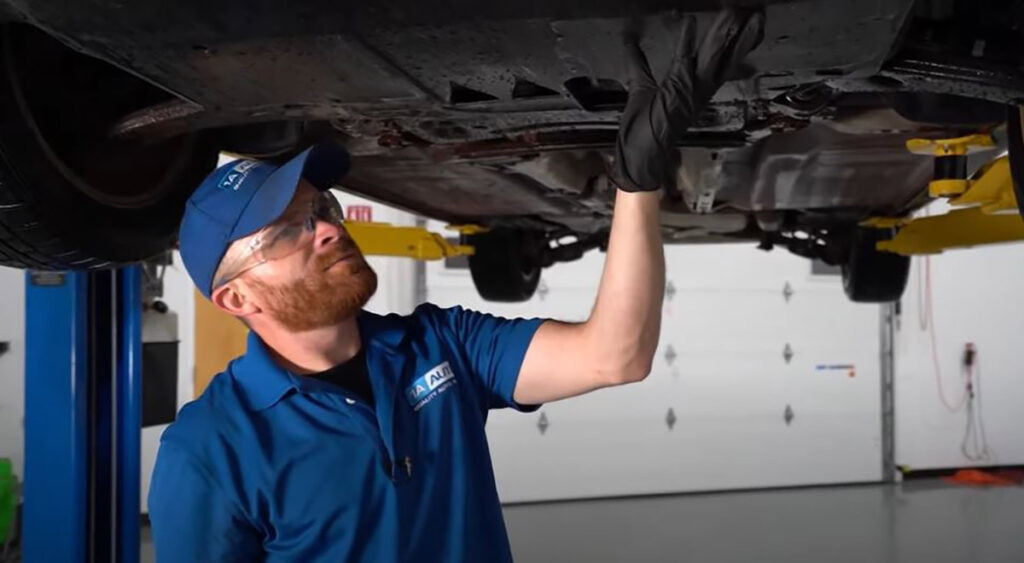How To Fix A Broken Car: Your Ultimate Guide
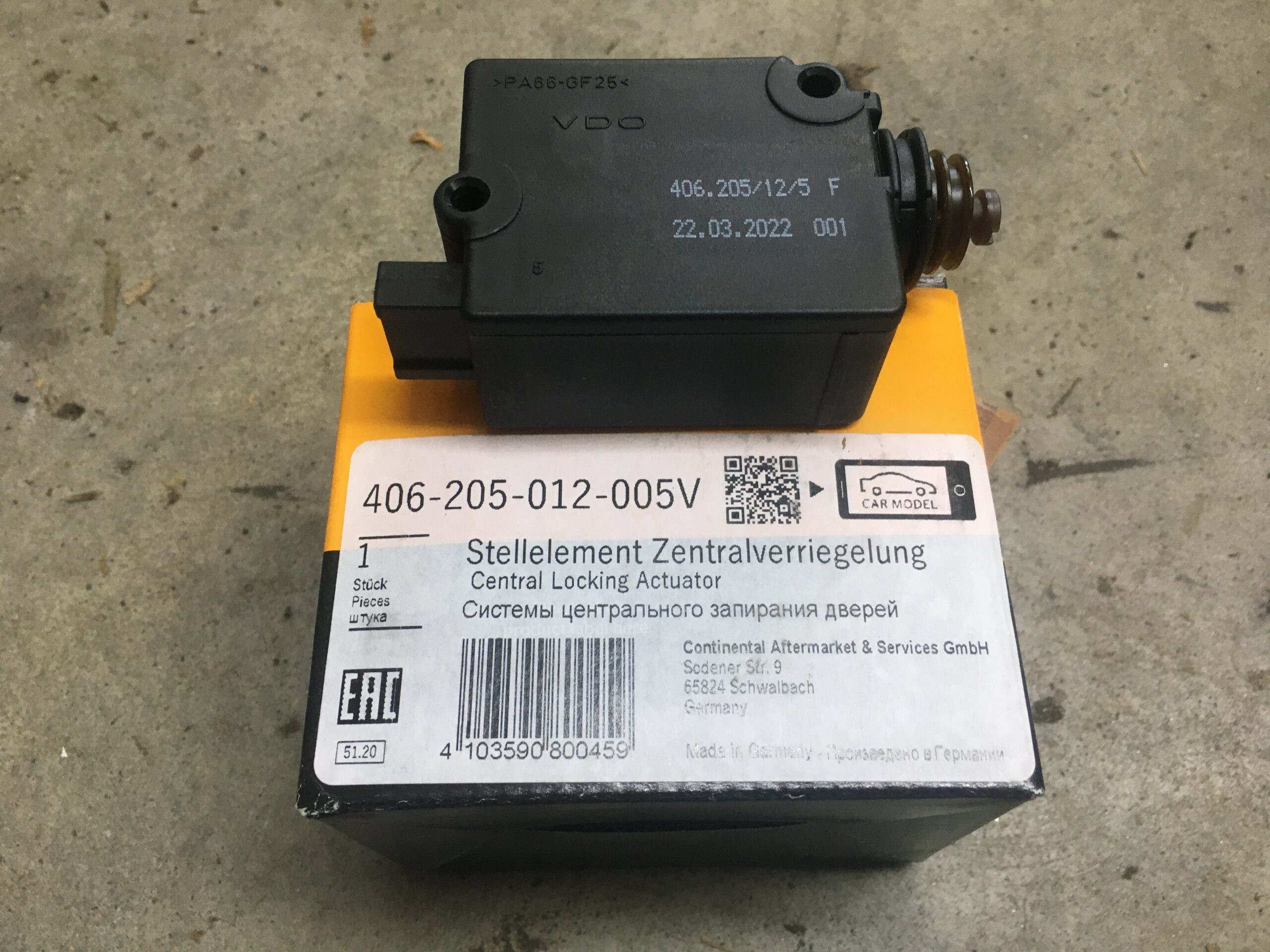
Fixing a broken car can seem daunting, but with the right knowledge and tools, it’s achievable. CARDIAGTECH.NET is here to guide you through the process of automotive repair, whether you’re a seasoned mechanic or a DIY enthusiast. Addressing car troubles head-on saves money and empowers you to maintain your vehicle effectively. Discover the essential techniques and equipment for successful car repairs and maintenance.
1. Understanding the Basics of Car Repair
Before diving into specific repairs, it’s crucial to grasp fundamental automotive concepts. This includes understanding the various systems in your car—engine, transmission, brakes, electrical—and how they interact.
1.1 Essential Systems in a Car
- Engine: The heart of the car, converting fuel into motion.
- Transmission: Transfers power from the engine to the wheels.
- Brakes: Ensures safe stopping.
- Electrical System: Powers lights, sensors, and other electronic components.
1.2 Common Car Problems
- Engine Issues: Misfires, overheating, or starting problems.
- Brake Problems: Squealing noises, reduced stopping power.
- Electrical Faults: Dead battery, faulty lights.
- Transmission Problems: Slipping gears, rough shifting.
2. Diagnostic Tools and Equipment
Accurate diagnosis is the first step in any car repair. Having the right tools can make this process more efficient and precise. CARDIAGTECH.NET offers a range of diagnostic tools suitable for both beginners and professionals.
2.1 Basic Diagnostic Tools
- OBD-II Scanner: Reads trouble codes from the car’s computer.
- Multimeter: Tests electrical circuits for voltage, current, and resistance.
- Compression Tester: Measures cylinder pressure to assess engine health.
2.2 Advanced Diagnostic Tools
- Diagnostic Scanners: Provides in-depth analysis of vehicle systems.
- Oscilloscope: Visualizes electrical signals to identify faults.
- Smoke Machine: Detects leaks in vacuum and exhaust systems.
2.3 Why Choose CARDIAGTECH.NET Tools?
CARDIAGTECH.NET provides high-quality tools designed for durability and accuracy. Our products help you diagnose issues quickly, saving time and money. Contact us at +1 (641) 206-8880 for expert advice on selecting the right diagnostic equipment.
3. Step-by-Step Guide to Fixing Common Car Problems
Let’s walk through some common car repairs. These guides provide detailed instructions, but always refer to your car’s service manual for specific procedures and safety precautions.
3.1 How to Fix a Dead Battery
A dead battery is a common issue. Here’s how to address it:
-
Jump Start:
- Connect the red (positive) cable to the positive terminal of the dead battery.
- Connect the other end of the red cable to the positive terminal of the good battery.
- Connect the black (negative) cable to the negative terminal of the good battery.
- Connect the other end of the black cable to a grounded metal surface on the car with the dead battery, away from the battery.
- Start the car with the good battery, then try starting the car with the dead battery.
-
Battery Replacement:
- Disconnect the negative terminal first, then the positive.
- Remove the battery hold-down clamp.
- Lift out the old battery.
- Install the new battery, ensuring correct polarity.
- Secure the hold-down clamp and reconnect the terminals, positive first.
3.2 How to Change a Tire
Changing a flat tire is a crucial skill for any driver:
- Safety First: Park on a level surface, turn on hazard lights, and engage the parking brake.
- Gather Tools: You’ll need a lug wrench, jack, and spare tire.
- Loosen Lug Nuts: Before lifting the car, loosen the lug nuts on the flat tire.
- Jack Up the Car: Place the jack at the designated jacking point and lift the car until the flat tire is off the ground.
- Remove the Flat Tire: Completely unscrew the lug nuts and remove the flat tire.
- Install the Spare Tire: Mount the spare tire onto the wheel studs and hand-tighten the lug nuts.
- Lower the Car: Lower the car using the jack.
- Tighten Lug Nuts: Fully tighten the lug nuts in a star pattern.
- Final Check: Ensure the lug nuts are secure and have the tire professionally inspected as soon as possible.
3.3 How to Replace Brake Pads
Replacing brake pads is essential for maintaining your car’s stopping power:
-
Preparation: Gather tools—jack, lug wrench, wrench set, C-clamp, brake cleaner, and new brake pads.
-
Remove Wheel: Loosen lug nuts, jack up the car, and remove the wheel.
-
Remove Caliper:
- Locate and remove the caliper bolts.
- Carefully slide the caliper off the rotor.
- Hang the caliper to avoid straining the brake line.
-
Replace Brake Pads:
- Remove the old brake pads.
- Use a C-clamp to compress the caliper piston.
- Install the new brake pads.
-
Reassemble:
- Reinstall the caliper.
- Tighten the caliper bolts.
- Reattach the wheel and tighten the lug nuts.
-
Final Steps:
- Pump the brake pedal to ensure proper engagement.
- Test drive the car to verify the brakes are functioning correctly.
3.4 How to Change Oil
Regular oil changes keep your engine running smoothly:
-
Warm Up Engine: Run the engine for a few minutes to warm the oil.
-
Gather Supplies: You’ll need a wrench, oil filter wrench, new oil, new oil filter, and a drain pan.
-
Locate Drain Plug: Find the oil drain plug under the engine.
-
Drain Old Oil:
- Position the drain pan under the drain plug.
- Remove the drain plug and let the oil drain completely.
- Reinstall the drain plug and tighten it securely.
-
Replace Oil Filter:
- Locate the oil filter.
- Use the oil filter wrench to loosen and remove the old filter.
- Lubricate the rubber gasket on the new filter with fresh oil.
- Install the new filter and tighten it by hand.
-
Add New Oil:
- Locate the oil fill cap on top of the engine.
- Pour in the correct amount of new oil as specified in your car’s manual.
-
Check Oil Level:
- Use the dipstick to check the oil level.
- Add more oil if necessary.
-
Final Steps:
- Start the engine and let it run for a few minutes.
- Check for leaks around the drain plug and oil filter.
- Turn off the engine and recheck the oil level.
 relay partAlt text: Technician inspecting a relay part during a car repair, highlighting the complexity of automotive electrical systems.
relay partAlt text: Technician inspecting a relay part during a car repair, highlighting the complexity of automotive electrical systems.
4. Advanced Car Repair Techniques
For more complex issues, advanced techniques are required. These often involve a deeper understanding of automotive systems and specialized tools.
4.1 Engine Diagnostics and Repair
- Reading Trouble Codes: Use an OBD-II scanner to identify engine issues.
- Compression Testing: Measures cylinder pressure to detect worn rings or valve problems.
- Leak Down Testing: Identifies leaks in cylinders to pinpoint valve or ring issues.
4.2 Transmission Repair
- Fluid Check and Replacement: Inspect the transmission fluid for contamination and replace as needed.
- Solenoid Replacement: Faulty solenoids can cause shifting problems.
- Rebuilding Transmission: Overhauling the transmission requires specialized knowledge and tools.
4.3 Electrical System Troubleshooting
- Wiring Diagrams: Essential for tracing electrical circuits.
- Voltage Drop Testing: Identifies excessive resistance in circuits.
- Component Testing: Testing sensors, actuators, and other electrical components.
4.4 Why Advanced Tools are Essential
Advanced repairs demand precise tools. CARDIAGTECH.NET provides professional-grade equipment that ensures accuracy and reliability. From diagnostic scanners to specialized tools, we have everything you need. Call us at +1 (641) 206-8880 for a consultation.
5. Safety Precautions for Car Repair
Safety should always be a priority when working on cars. Here are some essential precautions:
- Wear Safety Glasses: Protect your eyes from debris and chemicals.
- Use Gloves: Protect your hands from sharp objects and chemicals.
- Disconnect Battery: Prevents electrical shocks.
- Use Jack Stands: Never work under a car supported only by a jack.
- Ventilation: Work in a well-ventilated area to avoid inhaling harmful fumes.
5.1 Essential Safety Equipment
- Safety Glasses: Protect eyes from flying debris.
- Gloves: Protect hands from chemicals and sharp edges.
- Jack Stands: Securely support the vehicle.
- Wheel Chocks: Prevent the car from rolling.
6. The Role of CARDIAGTECH.NET in Your Car Repair Journey
CARDIAGTECH.NET is committed to providing top-quality tools and resources for all your car repair needs. We offer a wide range of products designed to make your repairs efficient and effective.
6.1 Our Product Range
- Diagnostic Tools: OBD-II scanners, multimeters, and more.
- Hand Tools: Wrenches, sockets, and screwdrivers.
- Power Tools: Drills, impact wrenches, and grinders.
- Specialty Tools: For specific tasks like brake work or engine repair.
6.2 Why Choose CARDIAGTECH.NET?
- Quality Products: Durable and reliable tools for professional use.
- Expert Support: Knowledgeable staff to assist with tool selection and technical advice.
- Competitive Pricing: Affordable tools without compromising quality.
- Customer Satisfaction: Dedicated to ensuring you have a positive experience.
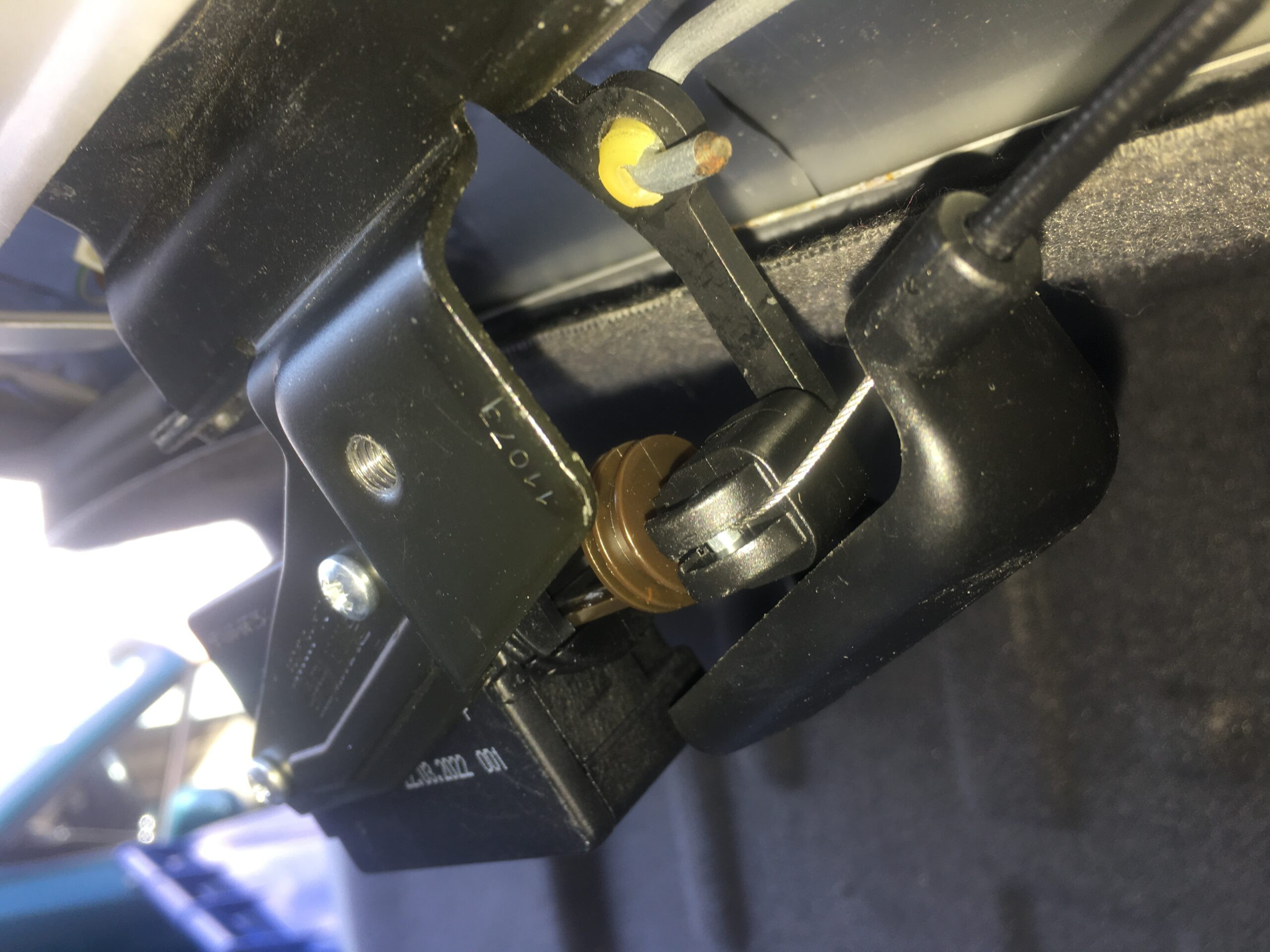 relay cableAlt text: Close-up of a new lock actuator installed on a car’s latch mechanism, illustrating the precision required in automotive repairs.
relay cableAlt text: Close-up of a new lock actuator installed on a car’s latch mechanism, illustrating the precision required in automotive repairs.
7. Maintaining Your Car to Prevent Breakdowns
Preventive maintenance is key to avoiding unexpected breakdowns. Regular check-ups and timely servicing can extend the life of your car and save you money in the long run.
7.1 Regular Maintenance Tasks
- Oil Changes: Every 3,000 to 7,500 miles, depending on your car and oil type.
- Fluid Checks: Check and top off coolant, brake fluid, power steering fluid, and windshield washer fluid.
- Tire Rotation: Rotate tires every 6,000 to 8,000 miles to ensure even wear.
- Brake Inspection: Check brake pads, rotors, and calipers regularly.
- Battery Check: Ensure the battery is securely mounted and terminals are clean.
7.2 Benefits of Regular Maintenance
- Extended Vehicle Life: Regular servicing keeps your car running longer.
- Improved Fuel Efficiency: Well-maintained engines operate more efficiently.
- Reduced Repair Costs: Catching small problems early prevents them from becoming major issues.
- Increased Safety: Properly maintained brakes, tires, and lights ensure safer driving.
7.3 How CARDIAGTECH.NET Supports Maintenance
CARDIAGTECH.NET offers a wide range of tools and equipment to help you perform regular maintenance tasks efficiently. Our products are designed for ease of use and durability, making car maintenance accessible to everyone. Contact us at +1 (641) 206-8880 for advice on maintenance tools.
8. Understanding Car Electrical Systems
The electrical system is critical to modern vehicles. Understanding its components and how they work is essential for diagnosing and repairing electrical issues.
8.1 Key Components of a Car Electrical System
- Battery: Provides the initial electrical power to start the car.
- Alternator: Charges the battery and powers the electrical system while the engine is running.
- Starter: Cranks the engine to start it.
- Wiring Harness: Connects all electrical components.
- Fuses and Relays: Protect circuits from overloads.
- Sensors: Monitor various parameters and send signals to the car’s computer.
- Actuators: Control various functions based on signals from the car’s computer.
8.2 Common Electrical Problems
- Dead Battery: Often caused by leaving lights on or a faulty charging system.
- Faulty Alternator: Can lead to a dead battery and electrical system malfunctions.
- Starter Problems: Can prevent the engine from starting.
- Wiring Issues: Broken or corroded wires can cause various electrical problems.
- Fuse Problems: Blown fuses can disable circuits.
8.3 Troubleshooting Electrical Problems
- Visual Inspection: Check for damaged wires, loose connections, and blown fuses.
- Multimeter Testing: Use a multimeter to check voltage, current, and resistance.
- Wiring Diagrams: Use wiring diagrams to trace circuits.
- OBD-II Scanner: Read trouble codes related to electrical issues.
8.4 CARDIAGTECH.NET Electrical Tools
CARDIAGTECH.NET offers a variety of tools for diagnosing and repairing electrical problems. Our multimeters, circuit testers, and wiring kits are designed for accuracy and reliability. Contact us at +1 (641) 206-8880 for expert assistance.
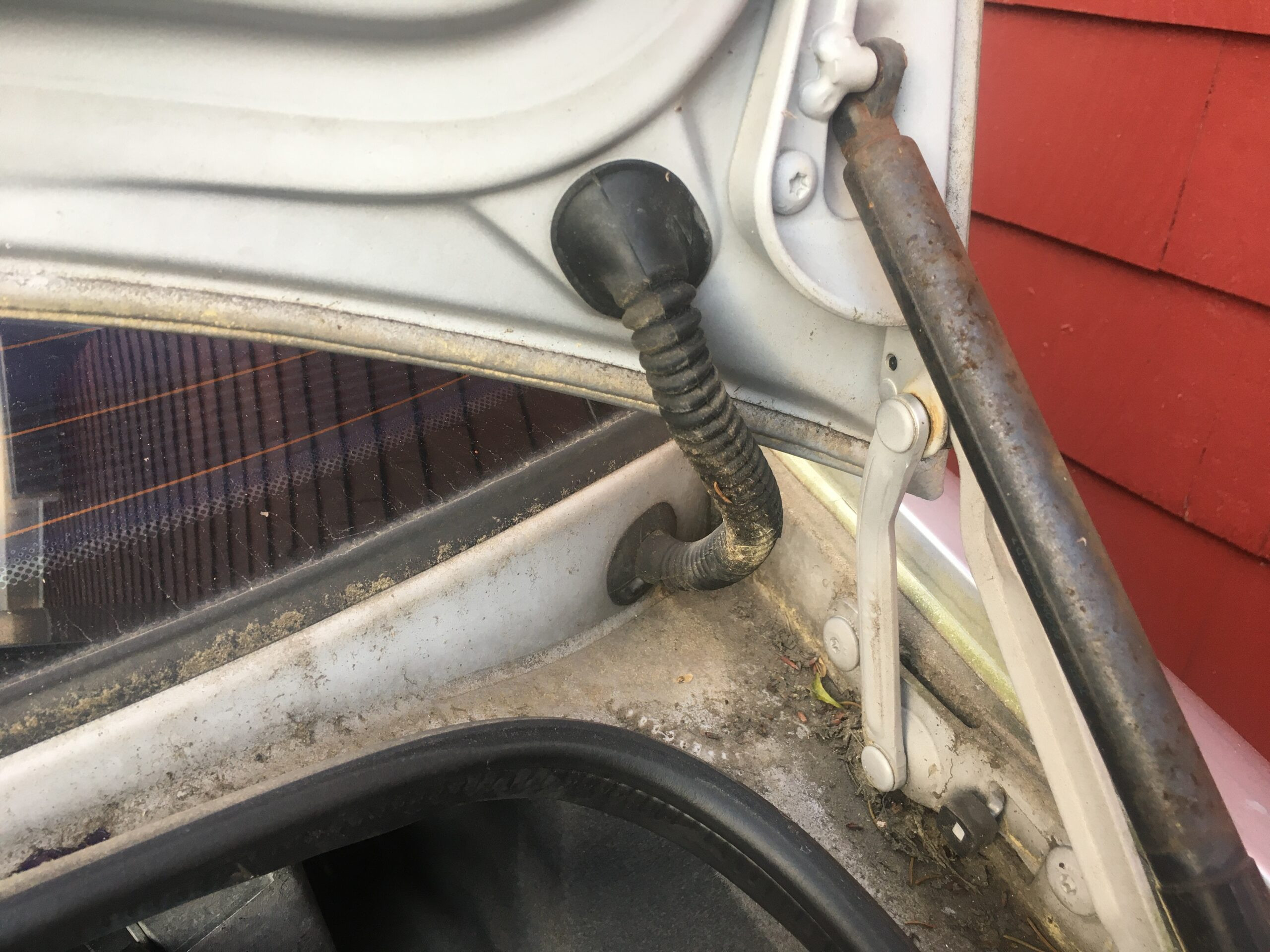 conduit trunkAlt text: A rubber sheath concealing wiring, emphasizing the importance of inspecting wiring harnesses for damage in automotive maintenance.
conduit trunkAlt text: A rubber sheath concealing wiring, emphasizing the importance of inspecting wiring harnesses for damage in automotive maintenance.
9. Body Work and Collision Repair
Body work and collision repair involve repairing or replacing damaged body panels. This can range from minor dents and scratches to major structural repairs.
9.1 Assessing Damage
- Visual Inspection: Identify all areas of damage.
- Measuring: Use measuring tools to assess structural damage.
- Estimating Costs: Determine the cost of parts and labor.
9.2 Basic Body Work Techniques
- Dent Removal: Use dent pullers and hammers to remove dents.
- Panel Replacement: Cut out and weld in new body panels.
- Filling: Use body filler to smooth out imperfections.
- Sanding: Sand down body filler to create a smooth surface.
- Priming: Apply primer to protect the metal and provide a base for paint.
- Painting: Apply paint to match the car’s original color.
- Clear Coating: Apply clear coat to protect the paint and add shine.
9.3 Tools for Body Work
- Dent Pullers: Remove dents without damaging the paint.
- Welding Equipment: Weld in new body panels.
- Sanders: Smooth out body filler.
- Spray Guns: Apply primer, paint, and clear coat.
- Body Filler: Fill in imperfections.
9.4 CARDIAGTECH.NET Body Work Supplies
CARDIAGTECH.NET offers a comprehensive range of body work supplies. Our tools and equipment are designed for professional use and ensure high-quality results. Call us at +1 (641) 206-8880 for expert advice.
10. Enhancing Your Car Repair Skills
Continuous learning is essential for staying up-to-date with the latest automotive technologies. There are many resources available to help you enhance your car repair skills.
10.1 Educational Resources
- Online Courses: Websites like Coursera and Udemy offer courses on automotive repair.
- Technical Schools: Provide hands-on training in automotive technology.
- Workshops and Seminars: Attend workshops and seminars to learn new skills and techniques.
- Service Manuals: Essential for understanding specific car models.
- Online Forums: Engage with other mechanics and enthusiasts to share knowledge and experiences.
- YouTube Channels: Many channels offer tutorials on car repair.
10.2 Staying Updated with Technology
- Read Industry Publications: Stay informed about new technologies and repair techniques.
- Attend Trade Shows: Discover new tools and equipment.
- Join Professional Organizations: Network with other professionals and access training resources.
10.3 CARDIAGTECH.NET Resources
CARDIAGTECH.NET is dedicated to providing resources that help you enhance your car repair skills. Our website features articles, tutorials, and product guides. We also offer expert support to answer your questions and provide technical assistance. Contact us at +1 (641) 206-8880 for more information.
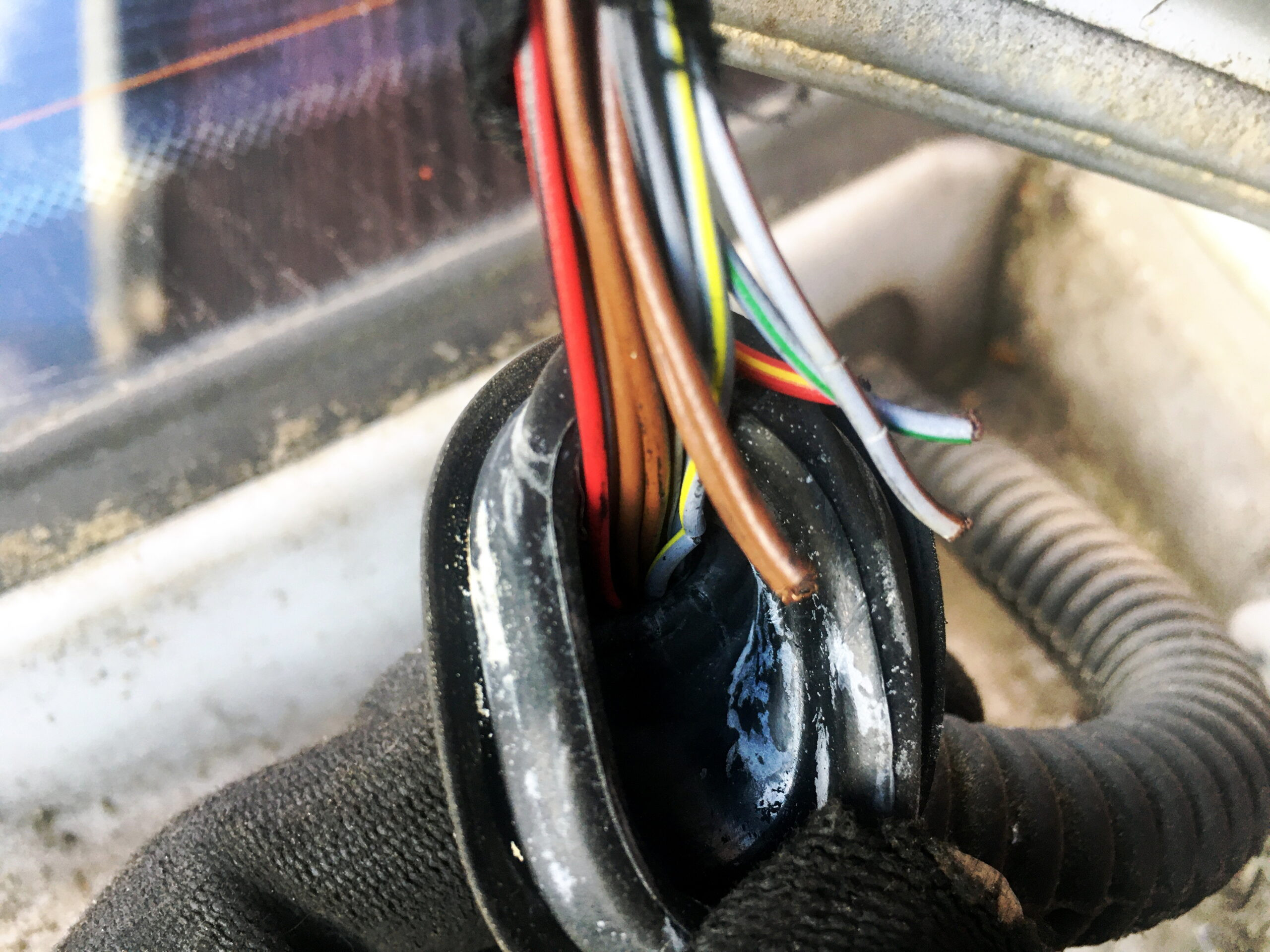 car wiring closeupAlt text: A detailed view of damaged car wiring, emphasizing the need for careful inspection and repair of automotive electrical systems.
car wiring closeupAlt text: A detailed view of damaged car wiring, emphasizing the need for careful inspection and repair of automotive electrical systems.
11. Tools to Make Car Repair Easier
Having the right tools can significantly simplify car repairs. Here are some tools that can make the job easier:
- Impact Wrench: For quickly removing and tightening nuts and bolts.
- Socket Set: A comprehensive set of sockets for various fasteners.
- Torque Wrench: Ensures fasteners are tightened to the correct specifications.
- Pry Bar Set: For separating components and removing stubborn parts.
- Inspection Camera: Allows you to see inside tight spaces.
- Magnetic Pickup Tool: Retrieves dropped nuts and bolts.
11.1 Essential Tool Sets
Investing in high-quality tool sets can save you time and effort. Look for sets that include a variety of sizes and types of tools.
- Mechanic’s Tool Set: Includes a range of sockets, wrenches, and screwdrivers.
- Specialty Tool Set: For specific tasks like brake work or engine repair.
- Electrical Tool Set: Includes multimeters, circuit testers, and wiring tools.
11.2 Organizing Your Tools
Keeping your tools organized can save time and prevent frustration. Consider using a tool chest, tool cabinet, or tool bag to store your tools.
- Tool Chest: Provides ample storage space and keeps tools organized.
- Tool Cabinet: Offers a convenient way to store and access tools.
- Tool Bag: Portable and ideal for carrying tools to different locations.
11.3 CARDIAGTECH.NET Tool Solutions
CARDIAGTECH.NET offers a wide range of tools and storage solutions designed to make car repair easier. Our products are durable, reliable, and competitively priced. Call us at +1 (641) 206-8880 for expert assistance.
12. How to Find the Right Parts for Your Car
Finding the right parts is crucial for successful car repairs. Here are some tips for locating the parts you need:
- Car’s VIN: Use your car’s Vehicle Identification Number (VIN) to identify the correct parts.
- Online Parts Catalogs: Websites like RockAuto and Advance Auto Parts offer online parts catalogs.
- Local Auto Parts Stores: Visit local auto parts stores for parts and advice.
- Service Manual: Refer to your car’s service manual for part numbers and specifications.
- Online Forums: Ask for recommendations on online forums.
12.1 Choosing Quality Parts
- OEM Parts: Original Equipment Manufacturer (OEM) parts are made by the same manufacturer as the original parts.
- Aftermarket Parts: Aftermarket parts are made by third-party manufacturers and can be more affordable.
- Used Parts: Used parts can be a cost-effective option for older cars.
12.2 Verifying Parts
Before purchasing parts, verify that they are compatible with your car. Check the part number and compare it to the specifications in your car’s service manual.
12.3 CARDIAGTECH.NET Parts Assistance
CARDIAGTECH.NET can assist you in finding the right parts for your car. We offer a wide range of parts and accessories and can provide expert advice on compatibility and quality. Contact us at +1 (641) 206-8880 for assistance.
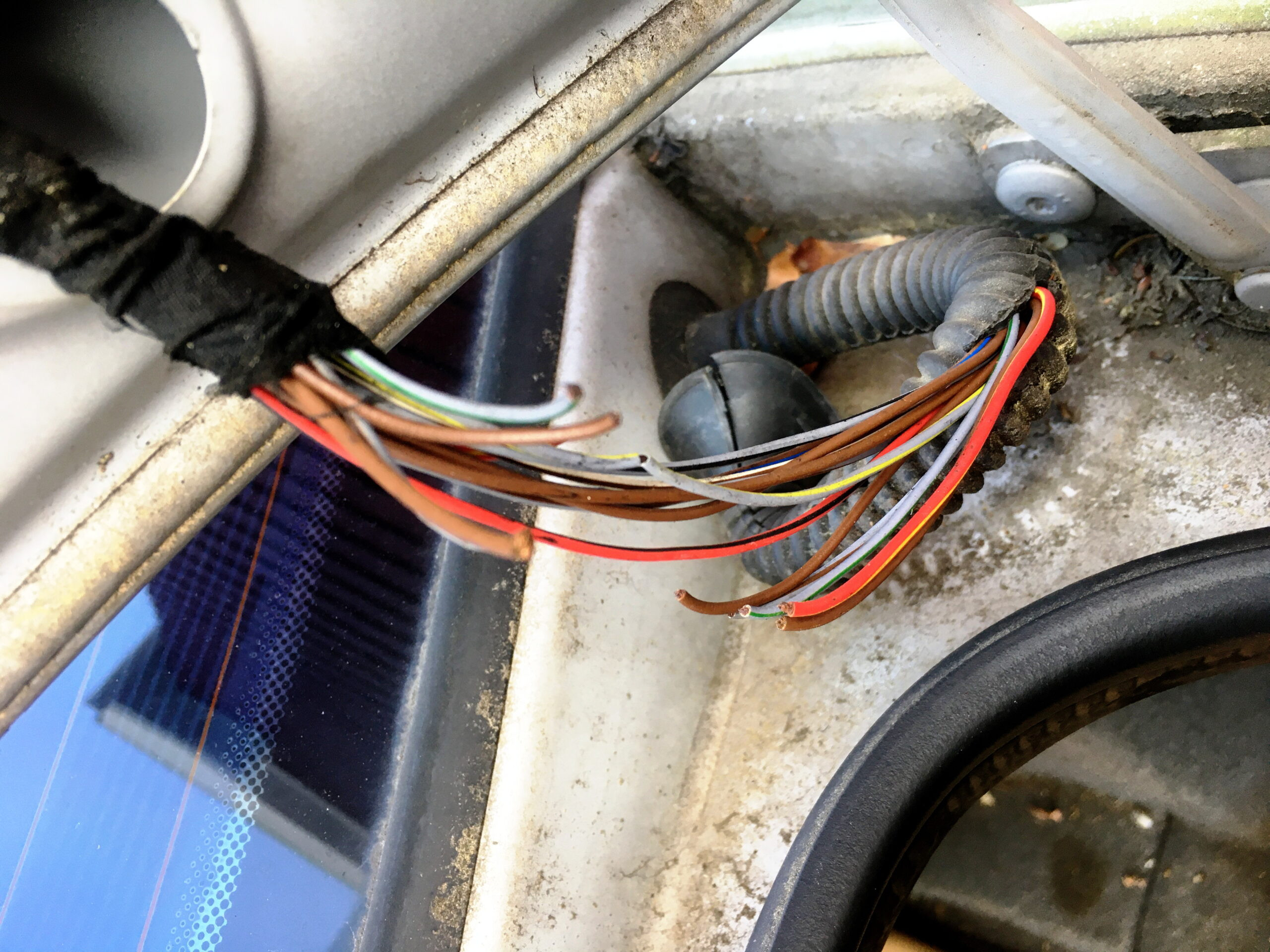 car wiring cut closeupAlt text: Close-up of severely damaged car wiring, underscoring the complexity of automotive electrical repairs and the importance of proper tools.
car wiring cut closeupAlt text: Close-up of severely damaged car wiring, underscoring the complexity of automotive electrical repairs and the importance of proper tools.
13. Why You Should Consider Professional Car Repair Services
While DIY car repair can be rewarding, there are situations where professional services are necessary. Here are some reasons to consider professional car repair:
- Complex Repairs: Some repairs require specialized knowledge and tools that are beyond the scope of DIY.
- Safety Concerns: Certain repairs, like brake work, can be dangerous if not performed correctly.
- Time Constraints: Professional mechanics can often complete repairs more quickly than DIYers.
- Warranty Issues: Improper repairs can void your car’s warranty.
- Lack of Experience: If you are not experienced in car repair, it’s best to leave certain tasks to the professionals.
13.1 Choosing a Repair Shop
- Reputation: Look for a repair shop with a good reputation.
- Certifications: Choose a shop with certified mechanics.
- Warranty: Select a shop that offers a warranty on their work.
- Estimates: Get estimates from multiple shops before choosing one.
13.2 The Benefits of Professional Service
- Expertise: Professional mechanics have the knowledge and experience to diagnose and repair car problems effectively.
- Quality Work: Professional shops use high-quality parts and tools and follow industry best practices.
- Warranty Protection: Professional repairs are typically covered by a warranty.
13.3 CARDIAGTECH.NET Partnership with Repair Shops
CARDIAGTECH.NET partners with reputable repair shops to provide high-quality service to our customers. We can recommend trusted shops in your area that use our tools and equipment. Contact us at +1 (641) 206-8880 for referrals.
14. Environmental Considerations for Car Repair
Car repair can have environmental impacts. It’s important to follow best practices to minimize these impacts.
14.1 Proper Disposal of Fluids
- Oil: Recycle used oil at a designated collection center.
- Coolant: Dispose of used coolant properly to prevent contamination.
- Brake Fluid: Recycle used brake fluid at a hazardous waste facility.
- Batteries: Recycle used batteries at a battery recycling center.
14.2 Reducing Waste
- Recycle Parts: Recycle used parts whenever possible.
- Use Reusable Materials: Use reusable rags and containers.
- Buy Environmentally Friendly Products: Choose environmentally friendly cleaners and lubricants.
14.3 Compliance with Regulations
- Follow Local Regulations: Comply with local regulations regarding the disposal of hazardous waste.
- Use Proper Equipment: Use equipment designed to minimize spills and leaks.
14.4 CARDIAGTECH.NET’s Commitment to Sustainability
CARDIAGTECH.NET is committed to promoting sustainable practices in car repair. We offer environmentally friendly products and provide information on proper disposal methods. Contact us at +1 (641) 206-8880 for eco-friendly solutions.
15. Frequently Asked Questions (FAQs) About Car Repair
Here are some frequently asked questions about car repair:
-
How often should I change my oil?
- Typically, every 3,000 to 7,500 miles, depending on your car and oil type.
-
What are the signs of a bad battery?
- Slow engine cranking, dim headlights, and the battery warning light.
-
How do I know if my brakes need to be replaced?
- Squealing noises, reduced stopping power, and a low brake pedal.
-
What is an OBD-II scanner?
- A tool that reads trouble codes from your car’s computer.
-
How do I jump-start a car?
- Connect jumper cables to the batteries of both cars, following the correct sequence.
-
What is the difference between OEM and aftermarket parts?
- OEM parts are made by the original manufacturer, while aftermarket parts are made by third-party manufacturers.
-
How do I find the right parts for my car?
- Use your car’s VIN or consult an online parts catalog.
-
What safety precautions should I take when working on a car?
- Wear safety glasses and gloves, disconnect the battery, and use jack stands.
-
How can I prevent car breakdowns?
- Perform regular maintenance tasks, such as oil changes and fluid checks.
-
When should I seek professional car repair services?
- For complex repairs, safety-critical tasks, and when you lack experience.
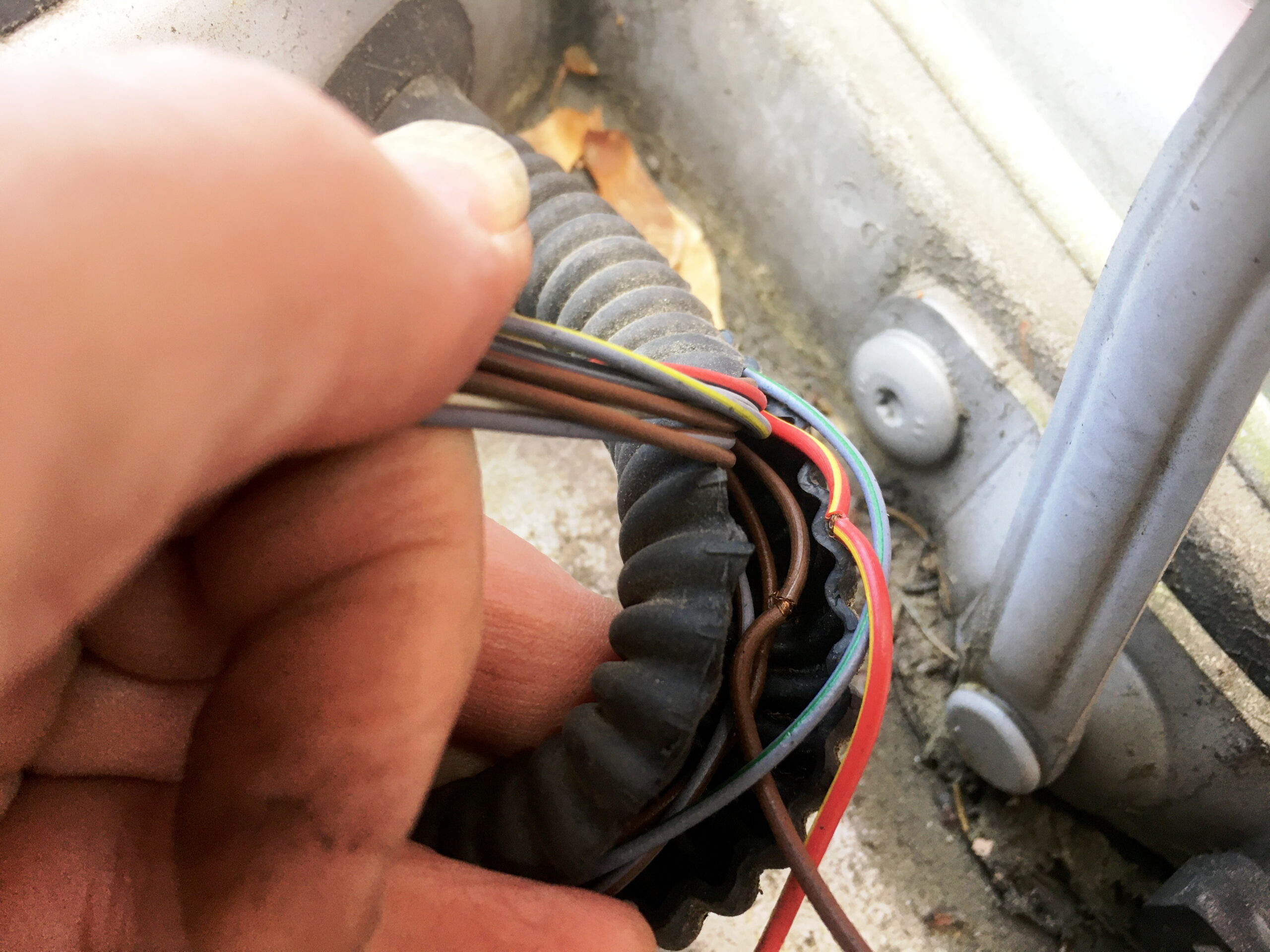 car wiring conduit closeupAlt text: Multiple damaged wires within a car’s wiring conduit, reinforcing the complexity of automotive electrical repairs.
car wiring conduit closeupAlt text: Multiple damaged wires within a car’s wiring conduit, reinforcing the complexity of automotive electrical repairs.
16. Actionable Advice
Ready to take control of your car repairs? Contact CARDIAGTECH.NET today at +1 (641) 206-8880 or visit our website CARDIAGTECH.NET. Our team of experts is ready to assist you with tool selection, technical advice, and any questions you may have. Empower yourself to maintain and repair your vehicle efficiently. Let CARDIAGTECH.NET be your trusted partner in automotive care.
CARDIAGTECH.NET: Your Partner in Automotive Excellence
At CARDIAGTECH.NET, we understand the challenges faced by automotive technicians and DIY enthusiasts. Our mission is to provide high-quality tools and equipment that enhance efficiency, accuracy, and safety. We are committed to supporting your success in the automotive industry.
Contact Us Today
Address: 276 Reock St, City of Orange, NJ 07050, United States
WhatsApp: +1 (641) 206-8880
Website: CARDIAGTECH.NET
Don’t Wait – Take the Next Step
Whether you’re looking to upgrade your diagnostic equipment, enhance your tool collection, or seek expert advice, CARDIAGTECH.NET is here to help. Contact us today and discover how we can support your automotive repair needs. Empower yourself to maintain and repair your vehicle efficiently with CARDIAGTECH.NET.




